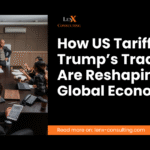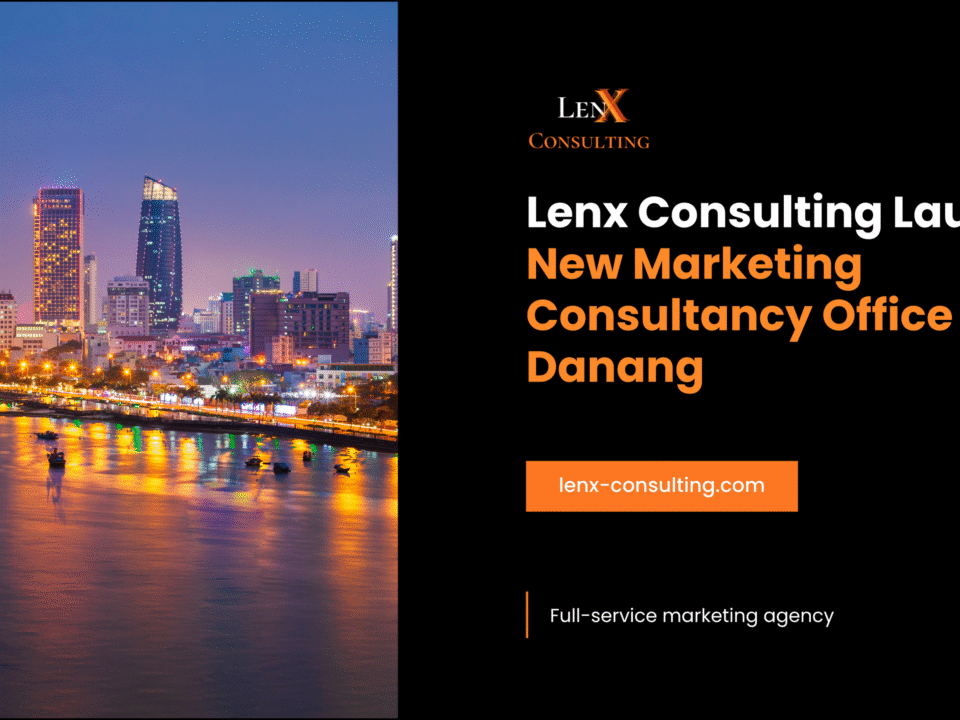Asian EVs Disrupting the European Market
The rise of the EV in Europe marks a significant shift in the global automotive landscape, driven in large part by innovation from Asia. As consumer demand for sustainable, affordable, and technologically advanced electric vehicles grows, Asian manufacturers are rapidly capturing market share across the continent. In this interview, LenX Consulting CEO Cody speaks with Alex Akniyaz, Director at FEST Auto, to explore how Asian EV makers are reshaping Europe’s transportation future and what this means for local and global players alike.
Cody: Hi my name is Cody and I’m the CEO of LenX Consulting, a marketing services company that provides, amongst other things, web development, graphic design, and commercial video production. I’m joined by Alex Akniyaz, Director at FEST Auto. Alex, perhaps you could explain a little about FEST Auto and your role within the business.
Alex: Hi Cody. Yes, I’m Alex Akniyaz and I’m responsible for the Global Marketing of FEST Auto. Founded in 2019 and based in Singapore, FEST Auto Technology is an EV technology specialist that manufactures electric light commercial vehicles. We also develop digital solutions for fleet and integrated vehicle management, leveraging artificial intelligence.
Our mission is to redefine the world’s urban transportation to become eco-friendly and smart. Our vision is to be the global leader of the world’s sustainable urban transportation. We see a world where each mile we drive contributes positively to our progress without compromising it at the expense of the environment. To this end, we bring value to our partners, clients, and their end users within the whole ecosystem, contributing together to this green transition. So far, we have launched in Europe, Latin America, Asia, and the Middle East, but that’s just the start.
Asian EVs: Why Europe Is Paying Attention
Cody: Thanks Alex. The topic of our conversation today is the Asian EV Invasion, and what I mean by that, is the rise of Asian electric vehicle manufacturers and how they are reshaping the global automotive landscape, specifically the penetration of the European market. To kick things off, let me ask you my first question. Europe is no stranger to the disruption of the automotive market by imports coming from the East, but what do you think is driving this latest wave of adoption by European consumers?
Alex: There are a few factors that the leading manufacturers are leveraging. Advanced technology, in particular when it comes to batteries, the advanced infrastructure and supply chains, which allow for lower cost of production and significant government support. This is particularly prevalent in China, where there is the additional factor of their labour policies, which is a discussion point on its own. However, there is no getting round the fact that companies such as BYD Auto, NIO and SAIC Motor are making big in roads in to the European market.
Beyond China: Asia’s EV Powerhouses
Cody: Yes, China is very prominent, but what other countries are leading the charge?
Alex: You can never write off Japan. Toyota and Nissan are producing excellent vehicles. The ones to watch for me, however are South Korea, India and our very own Singapore. Hyundai and Kia already have an established presence, but Singapore, with us at FEST Auto among a number of companies, and India, with Tata Motors, OLA Electric and Mahindra Electric are also making strong progress. Our light commercial vans are already a big hit in France, Italy and Turkey.
Unique Strategies from Asia’s EV Leaders
Cody: How do these EV manufacturers differ in their approaches?
Alex: Asian electric vehicle manufacturers differ significantly in their approaches based on their core strategies, target markets, and technological innovations. There are some key distinctions among them. Some go for a technology focus. NIO, for example, emphasises their battery-swapping technology, which they claim is a unique solution to reduce charging time. Hyundai and Kia focus on versatility, offering a variety of drivetrains such as hybrids, plug-in hybrids, and pure EVs. BYD has adopted a market positioning strategy, addressing the affordable mass-market EV segment that caters to everyday consumers, while OLA has focused on the two-wheeler market, which is crucial in densely populated countries like India.
There is a lot of focus on sustainability, environmental impact and Systems Engineering, which is where we at FEST Auto are positioning ourselves. At FEST, we’ve brought innovation to electric light commercial vehicles and software that maximises the value propositions of businesses while delivering on sustainability goals. We are proud to be actively contributing to the green energy transition, empowering companies to make positive change and providing the technology to make that possible.
Government subsidies are no doubt helping companies such as BYD and XPeng, allowing them to produce very cost effective vehicles and taking a lead in battery production helps control cost and innovation.
By aligning a strategy with the various consumer demands, geographical advantages and technological strengths, each brand carves its niche.
Key Consumer Trends Driving EV Adoption
Cody: You mentioned consumer demands there, what consumer trends do you feel are influencing Asian electric vehicle purchases?
Alex: There are many trends, but let me highlight what I feel are the key ones.
- Sustainability Awareness: Many consumers are prioritizing eco-friendly options, driven by concerns about climate change and the desire to reduce carbon footprints.
- Cost Savings: The lower operating costs of EVs, including reduced fuel and maintenance expenses, are appealing to budget-conscious buyers.
- Government Incentives: Subsidies, tax breaks, and rebates for EV purchases are encouraging adoption, especially in regions with strong policy support.
- Technological Features: Consumers are drawn to EVs for their advanced features, such as autonomous driving capabilities, connectivity, and over-the-air updates.
- Charging Infrastructure: The expansion of charging networks is reducing range anxiety and making EVs more practical for everyday use.
- Online Purchasing: Millennials and younger generations prefer streamlined online buying experiences, which many EV manufacturers are offering.
Overall, EV purchases tend to align with values like sustainability and cutting-edge technology, whereas traditional vehicle purchases have historically been rooted in practicality, availability, and established habits. It’ll be interesting to see how the increasing popularity of EVs might reshape buying patterns for both types of vehicles over time.
Asian EVs in Europe: What’s Next
Cody: Very interesting, Alex. Do you think that Asian manufacturers will continue their strong push into the European market?
Alex: Absolutely, they are likely to capture a larger share of the European market due to their competitive pricing and advanced technology. With the rising production costs in Europe, I believe Asian manufacturers will maintain an edge by offering more affordable EV options. Their technological advancements in things like battery and ultra-fast charging will further enhance the appeal of Asian EVs.
Navigating Europe’s Tough Regulations
Cody: What about Europe’s tough environmental regulations? Is that a barrier to entry?
Alex: It certainly doesn’t help, however, Asian manufacturers are aligning their strategies with Europe’s stringent environmental regulations and are emphasising sustainability and zero-emission vehicles. There’s also a move towards Strategic Partnerships. Collaborations with European companies and governments are helping Asian brands navigate regulatory challenges and expand their presence. There are still challenges ahead. Geopolitical tensions, tariffs, and competition from established European brands all have to be negotiated.
FEST Auto’s Strategy for Europe
Cody: So how are FEST Auto addressing the European markets?
Alex: FEST Auto is making waves in Europe with its innovative electric light commercial vehicles or e-LCVs. Our mission is to redefine urban transportation by focusing on sustainability and efficiency. This niche approach sets us apart, catering specifically to the growing demand for eco-friendly commercial vehicles.
The range of vehicles, such as the E-BOX series, are designed for various delivery needs. The vehicles come with impressive features like quick charging times and AI-based fleet management systems for delivery route optimisation. They have a centralized electronic architecture, which enhances digital control and reliability. Our vehicles also feature an extendable and multifunctional chassis, allowing for adaptability to various business needs. We prioritise sustainability by using eco-friendly materials and manufacturing practices.
European Defence Tactics
Cody: What defences do you expect the European Union and the manufacturers to put up?
Alex: Europe is actively trying to counter the growing dominance of Asian electric vehicle manufacturers, particularly from China. The European Union has imposed tariffs of up to 35% on Chinese EV imports to protect local manufacturers and address concerns about unfair subsidies. Governments across Europe are providing incentives for local EV production and research to foster innovation and reduce reliance on imports.
Countries like Germany are ramping up investments in EV supply chains and infrastructure to strengthen their domestic production capabilities and European manufacturers are working to enhance their competitiveness by improving technology, reducing costs, and aligning with climate goals.
The EU has introduced a comprehensive plan to secure the long-term competitiveness of its automotive sector. This includes accelerating the transition to zero-emission vehicles (ZEVs) and improving supply chains. Legislative proposals are being developed to increase the share of ZEVs in corporate fleets and efforts are underway to make the EU’s battery production self-sufficient and cost-competitive. This includes direct support for battery producers and strengthening European production. The EU is also investing in connected and autonomous vehicle technologies, creating testing areas, and regulatory frameworks to foster innovation. It is accelerating the rollout of charging stations, providing incentives for consumers to switch to ZEVs, and encouraging social leasing schemes to make sustainable transport accessible.
Ultimately, these measures aim to balance consumer benefits with long-term sustainability and economic resilience.
European EVs Making Moves in Asia
Cody: And are you seeing added competition from European electric vehicle (EV) manufacturers in the domestic markets?
Alex: Oh yes! European manufacturers are increasingly targeting the Asian market, leveraging their advanced technology and design expertise. Asia presents a significant opportunity due to its growing demand for sustainable transportation solutions and government incentives promoting EV adoption.
Cody: So what brands are making the headlines?
Alex: European EV brands like Polestar and Lotus Technology are making notable strides in the Asian market. Polestar, which is a premium EV brand from Sweden, has gained attention for its minimalist Scandinavian design and sustainability efforts. Lotus Technology, originally a British sports car manufacturer, has transitioned into the EV space and is leveraging its racing heritage to appeal to Asia’s luxury market
Volkswagen has been expanding its presence with models like the ID series, which are well-received for their affordability and practicality. BMW i, the electric division of BMW, appeals to the luxury market with its sleek designs and advanced technology.
Cody: What strategies from the Europeans seem to be resonating in Asia?
Alex: The European EV brands are employing several strategies to establish themselves in the competitive Asian market. Brands like Volkswagen and BMW are tailoring their vehicles to meet the preferences and needs of Asian consumers. This includes offering compact models suited for urban environments and integrating features like advanced infotainment systems that appeal to tech-savvy buyers. Manufacturers are collaborating with local companies for manufacturing, distribution, and after-sales services and that helps them navigate regulatory challenges and build trust with local consumers.
They position themselves as partners in the region’s green transition, highlighting their commitment to sustainability, emphasising eco-friendly production processes and the use of recyclable materials, which resonates with environmentally conscious buyers.
They also leverage their reputation for quality. Brands like Audi and Mercedes-Benz target the luxury segment, appealing to affluent consumers in Asia. And of course, they take advantage of subsidies and incentives offered by Asian governments for EV adoption.
LenX Consulting and FEST Auto: A Strategic Partnership
Cody: Alex, thank you for your very insightful answers and for your time in speaking with me. Before I let you go, I was hoping for a shameless plug for LenX Consulting. Can you sum up what it is that LenX has done for FEST Auto and why you chose to partner with us?
Alex: No such thing as a free lunch eh? What have you done for us? Well, the challenge we faced is that we needed a comprehensive global marketing strategy to enter multiple international markets. It’s not just about introducing our cutting-edge technology to new audiences but also to generate widespread interest and drive demand for our innovative EV solutions and that’s where LenX Consulting came in.
You helped to position FEST Auto as a leader in the future of transportation by developing and implementing a strategy, which covered every touchpoint of brand visibility and engagement. From high-impact video production to print and digital campaigns, you ensured that our message reached the right audience across multiple markets.
You and your team crafted compelling narratives that highlighted our commitment to sustainability, AI-driven vehicle efficiency, and the future of urban mobility. A crucial element of this transformation was a complete web development strategy. You designed and built a high-performance, conversion-optimised website, ensuring that FEST Auto had a seamless digital experience to match its innovation in electric vehicles. The new website provided an intuitive user journey, engaging product showcases, and a lead-generation system that maximised inquiries and customer engagement.
Through a mix of targeted digital marketing, content-driven engagement, and strategic branding, you help maximise FEST Auto’s reach. The campaigns leveraged advanced analytics and market insights, enabling us to continuously refine our performance and ensure optimal engagement and lead generation across all platforms.
As for the why, well that’s more intangible and comes down to relationships and human connection. We liked your open approach, the fact that you took time to listen to us and to really analyse the business and the market rather than trying to sell your services upfront.
The results show we made the right decision. The impact of your work was immediate and far-reaching. FEST Auto’s marketing transformation has resulted in a surge of interest, generating over 10,000 leads per month in each market and the new website has played a key role in converting visitors into inquiries. FEST Auto is now successfully positioned as a major player in the EV market.
Cody: Many thanks for those glowing comments, Alex. It really is a pleasure working with you and the team and we’re really excited to see what’s next in store for FEST Auto.
The Future of EV in Europe is Global
As the competition heats up, the EV in Europe space is evolving faster than ever. Asian manufacturers are pushing boundaries with cutting-edge technologies and strategic market entries, while European automakers and policymakers are stepping up to defend their home turf. The next few years will be pivotal in defining who leads in sustainable mobility, and one thing is clear—collaboration, innovation, and adaptability will shape the future of the electric vehicle industry.







